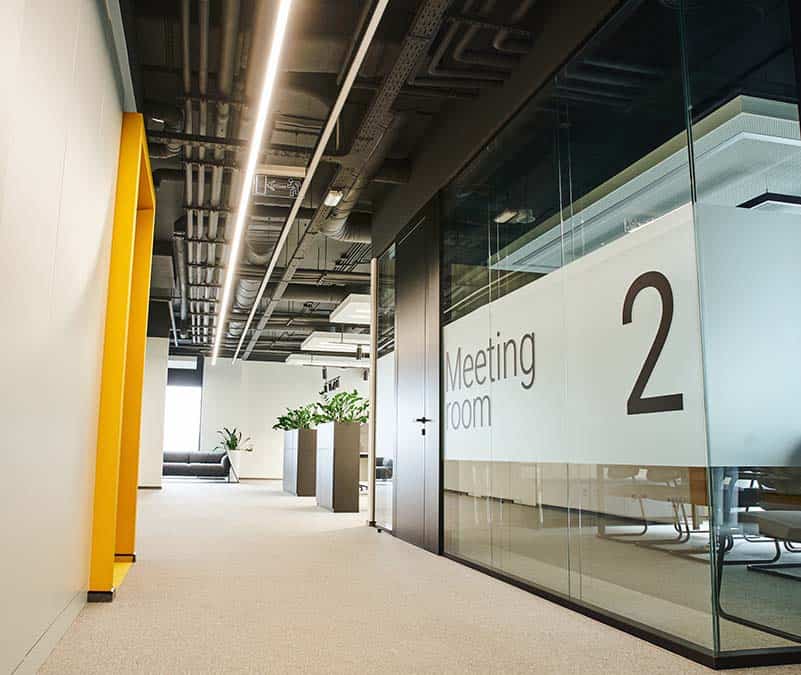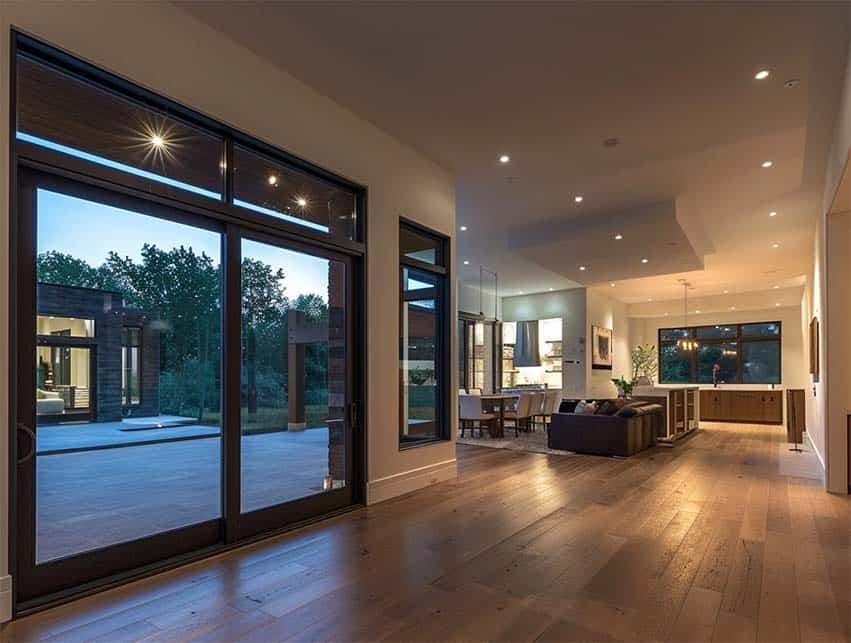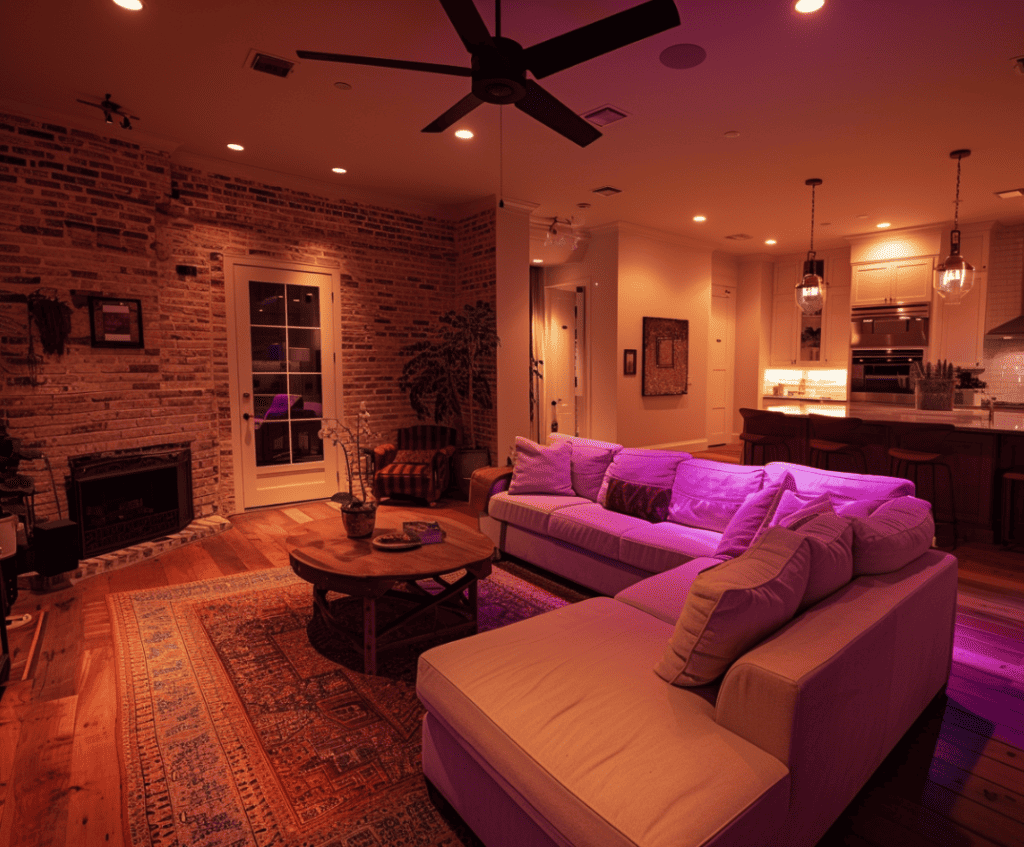LED Lighting Systems: Pros & Cons in Homes and Offices

LED Lighting: How Beneficial is the New Normal in Lighting Technology?
As licensed professional electricians in San Antonio and its region, we have observed a growing interest for LED lighting. Both homeowners and businesses are considering replacing traditional incandescent bulbs and tubes for LED light banks. We also see this trend in industrial facilities, both large and small. Fluorescent tubes are being replaced by more energy-efficient systems.
In this article, we will discuss the pros and cons of LED lighting. We will cover both homes and professional settings, including retail stores and offices.
LED Lighting is More Energy-Efficient
When discussing lighting, energy efficiency is not just about “low power usage”. Neon tubes have an economic advantage over incandescent bulbs. This fact explains their popularity over the past 50 years. However, replacing neon tubes with LED lights is not just about reducing utility bills.
A neon tube costs less than an LED light strip upfront. The real savings come in the long term. Shops or factories will save money, but it will be a while after they replace their fluorescent bays with LED light banks.
Energy efficiency is also related to how much light an LED strip provides vs. a neon tube or an incandescent bulb. In factories and shops, luminance is key to performance and productivity.
Luminance is what our eyes see as brightness. A term used in fields like photography and display technology, it describes the light a surface emits or reflects. A brighter workstation makes tasks easier. However, too much brightness can tire the eyes. There is a balance to find. Even with this need for calibration, LED lighting is more energy-efficient than neon tubes and light bulbs. That is why LED bulb packaging often compares its wattage to incandescent bulbs.
LED Lighting: Pros and Cons
Considering the growing interest of the general public and businesses for LED lighting, it seems interesting to discuss the pros and cons of these systems under 4 criteria:
- Artistic (how does this type of lighting beautifies or not the environment in which it operates)
- Engineering (are these systems more complex, more prone to failure?)
- Environmental (are LEDs “greener” than light bulbs or neon tubes?)
- Scientific (is the quality of light better with LED lighting?)
We consider these criteria for both homes and offices.
Artistic Criteria
Pros:
Home: LED lighting can be bought in a wide range of colors and brightness levels, allowing homeowners to create a variety of ambiances. LED strips can be used for accent lighting, task lighting, as well as general lighting. Dimmable LEDs can also change the mood of a room. From a feel-good perspective, we can say that LED lighting delivers.
Office: LED lights, due to their luminance, can enhance productivity. Proper lighting reduces eye strain. Some studies suggest it can also boost mood and alertness, especially during the afternoon slump.
Cons:
Home: The retail cost of LED lighting fixtures is higher than traditional light bulbs. Families on a budget may not have the means to afford a full LED lighting system upfront. This obviously can impact the general aesthetics of their home.
Office: Some might find the bright white light of LEDs too stark or “clinical”. Not everyone will appreciate this aesthetic.
Engineering Criteria
Pros:
Home & Office: LEDs are efficient: they turn most of their energy into light, not heat. They also last longer than traditional bulbs, reducing replacement frequency. Durable, they are less likely to break. From an engineering perspective, LEDs have clear advantages over bulbs and tubes.
Cons:
Home & Office: LEDs require more complex power supply systems. Their performance can vary due to voltage fluctuations. They also produce directional light, which is not ideal for all applications. In homes, this doesn’t affect the general quality of lighting because objects are relatively close to each other. But in large workshops and factories, where workstations are spaced out, the footprint of an LED bank could be an issue.
Environmental Criteria
Pros:
Home & Office: LEDs are more energy-efficient than traditional lighting options. Anyone specifically interested in their carbon footprint, would probably consider LEDs as “the green choice”. Also, unlike CFLs, LEDs do not contain mercury.
Cons:
Home & Office:
LEDs are eco-friendly, but their manufacturing is not. It has a high environmental impact because of the rare earth elements used. This also brings up supply chain concerns. Where do these elements come from? What is the carbon footprint of mining and transporting them?
Currently, not all LED parts are recyclable. Recycling technology is not yet advanced enough to make the recycling process economically viable.
Bottom line, LEDs are the green choice in terms of power usage. But their carbon footprint compares negatively to that of light bulbs and fluorescent tubes.
Scientific Criteria
Pros:
Home & Office: LEDs offer high-quality light. They can produce specific colors without filters, unlike traditional lights. They also do not emit harmful UV radiation. In some settings, like where accurate color rendition is vital, LEDs are the best choice.
Cons:
Home & Office: Some people may be sensitive to the flicker rate of LED lights, which can cause headaches or eye strain.
Additionally, exposure to the blue light emitted by LEDs can disrupt sleep patterns if used extensively in the evening. This is why it is advisable to avoid screens 30-60 minutes before bedtime. Some phones offer blue light settings that decrease blue light emission.
Bottom line
We have outlined the pros and cons of LED lighting at home and at the office under 4 major criteria:
- Artistic
- Engineering
- Environmental
- Scientific
LED lighting is versatile. It can shape and change light like never before. It enhances its surroundings, and there is some evidence it boosts office productivity.
LEDs are also more efficient than traditional bulbs and tubes in converting energy into light. For this reason alone, they generate significant power savings for households and businesses.
LEDs are greener in terms of energy efficiency. But recycling technology and material science need to advance for LEDs to be truly eco-friendly.
Studies show they render colors more accurately than bulbs or tubes. They are the top choice where true color is vital. However, their flicker rate and blue light can have negative effects with overexposure. Scientific studies recommend to take breaks and use natural light.
Overall, LED lighting is a safe technology. Its benefits outweigh the downsides, and a wider adoption is inevitable. As lighting science and electronics progress, the negatives will be worked out.
Additional resources
We did not pull these data from thin air. Here are some sources that back it up:
- Impact of Light on Outcomes in Healthcare Settings: This study found that the quality of light affects a variety of outcomes in healthcare settings, including employee productivity. While this is a healthcare setting, the principles can be applied to other work environments .
- Influence of Light on Student Learning and Behavior: This article discusses how light, including LED light, can influence learning and behavior in educational settings. Again, while this is an educational setting, the principles can be applied to other work environments.
- Effects of LED Lighting on the Productivity of Office Workers: A study published in the journal Building and Environment found that office workers were more productive under LED lighting.
- LED Lighting in the Workplace: This article discusses how LED lighting in the workplace can improve productivity by providing better quality light.
- The Impact of Office Lighting on Employee Productivity: This article from Lux Review discusses how office lighting, including LED lighting, can impact employee productivity.





























